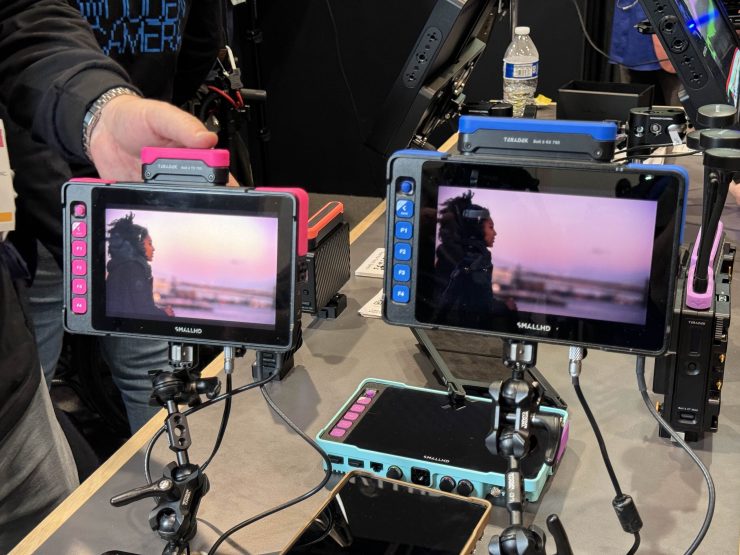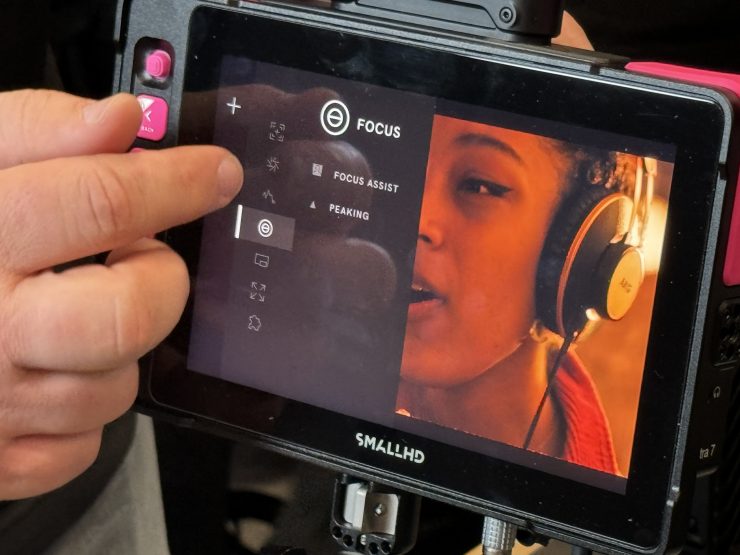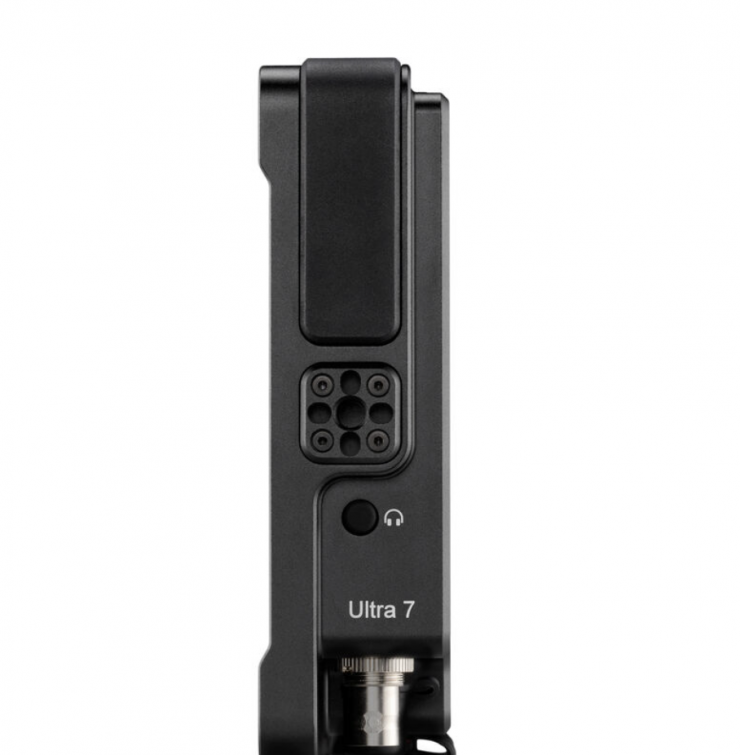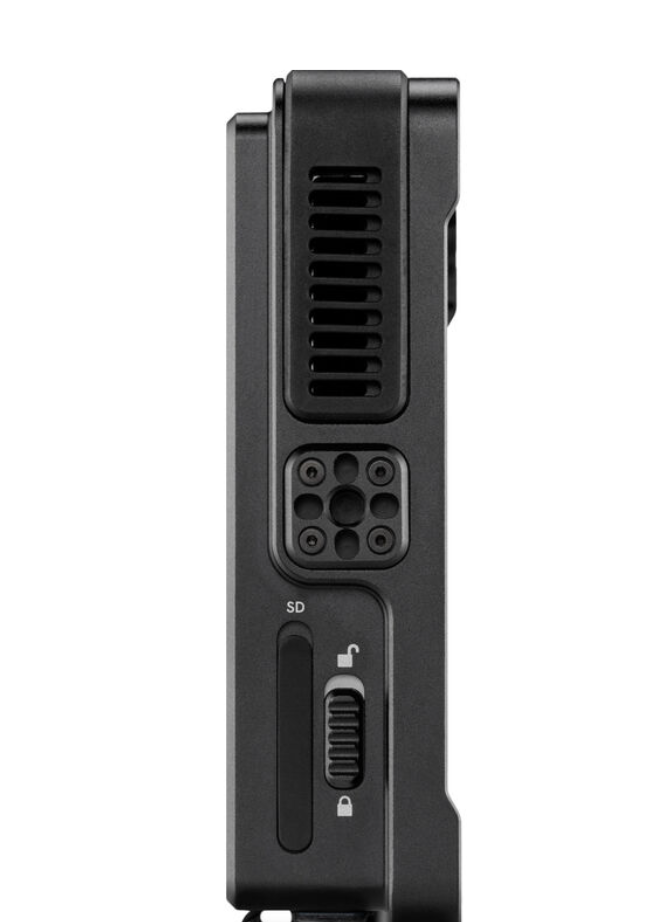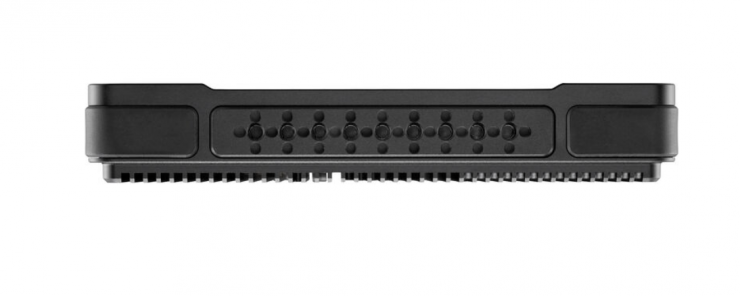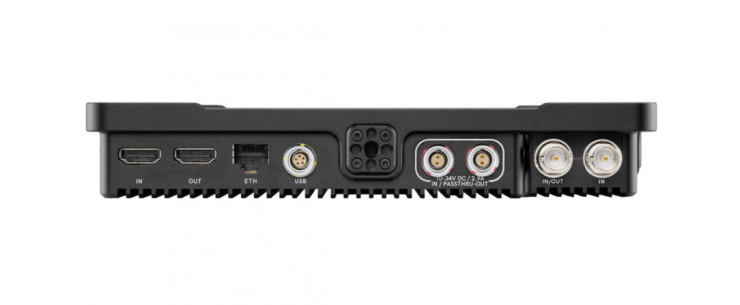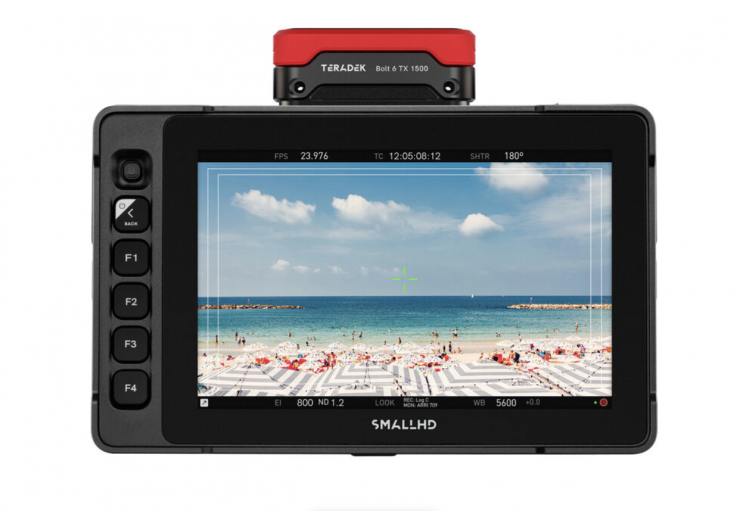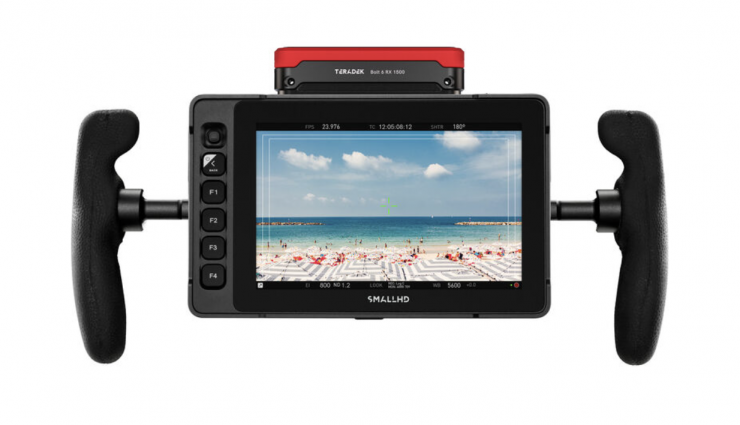SmallHD recently announced its new Ultra 7 On-Camera Touchscreen Monitor. Essentially this is a larger version of the ULTRA 5 that I reviewed on the site last year.
I caught up with SmallHD at NAB 2024 to have a look at the monitor. They were also showing the new Ultra7 Bolt 6 TX 1500 Monitor. This version feature a built-in Bolt 6 wireless transmitter with the ability to send 4K signals using 6 GHz Wireless Transmission up to 1500′.
The Ultra 5 was originally announced at IBC 2022 and it is one of three monitors in SmallHD’s Smart 5 Series, which consists of the Ultra 5, Cine 5, and Indie 5 touchscreen displays. There are also two additional wireless versions of the Ultra 5 (TX/RX). The Ultra 5 is the flagship in the series.
It has been quite a while since SmallHD last released a 7″ on-camera monitor. While a lot of users prefer smaller sized 5″ monitors, especially when working with small to medium sized digital cinema cameras or mirrorless hybrids, I think a lot of professionals using larger digital cinema cameras tend to prefer a 7″ monitor.
Key features
- 7″ 2300 cd/m² touchscreen panel
- 6G-SDI and HDMI Inputs & Outputs
- 5-Pin USB & Ethernet Control Powers
- PageOS User Interface
- SD Card Slot
- IP53 Rating
- Onboard Button Controls
Display
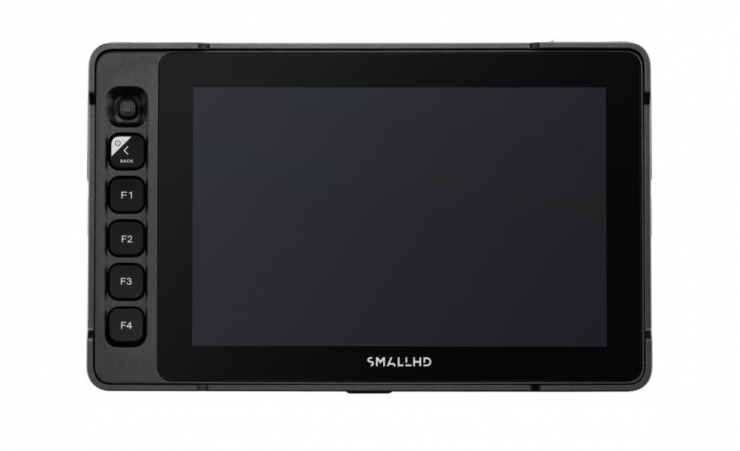
The SmallHD Ultra 7 On-Camera Touchscreen Monitor features a 7″ 2300 cd/m² display for viewing in just about any indoor or outdoor environments. I thought this may have been the same panel that is being used in the ARRI CCM-1 that is made by SmallHD, but it doesn’t appear to be.
The Ultra 7 isn’t as bright as the Ultra 5 which features a 3000 cd/m² display. In saying that, from past experience I have found that larger monitors with 1800-2000 cd/m² can actually appear to be as bright as smaller sized monitors with more nits.
Size & Weight
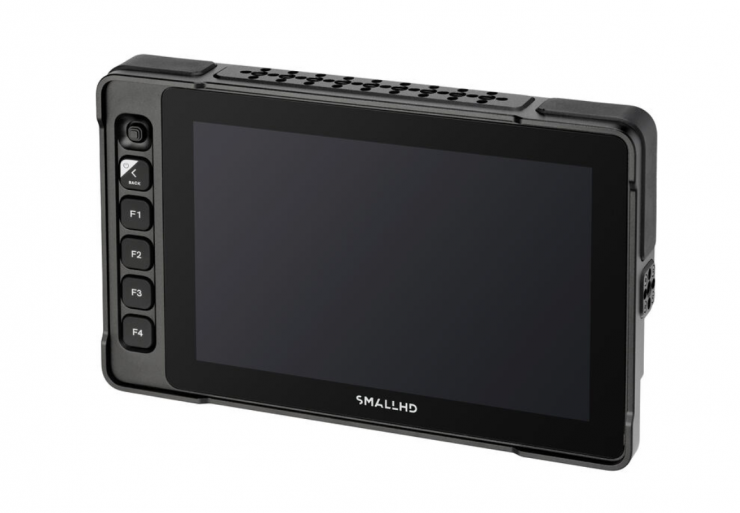
The Ultra 7 weighs 2.0 lb / 900 g and it has physical dimensions of 8.2 x 5.1 x 1.36″ / 209 x 130 x 34.66 mm.
The monitor has an IP53 rating so it offers a certain level of dust and water resistance.
Inputs & outputs
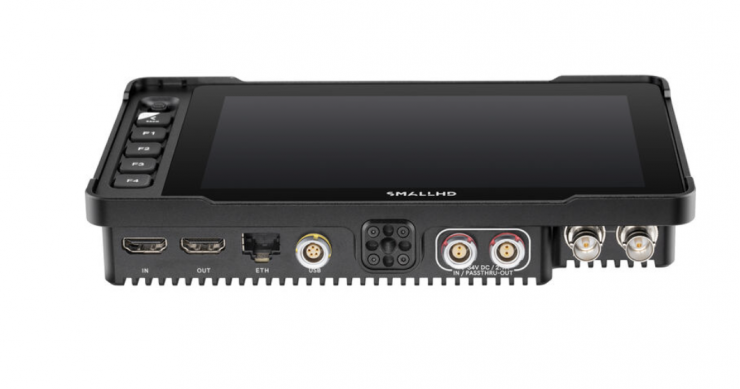
The monitor has 6G-SDI and HDMI input and output ports and it supports up to UHD 4K video. It will work with ARRI, Sony, and RED cinema cameras thanks to the 5-pin USB and Ethernet control ports.
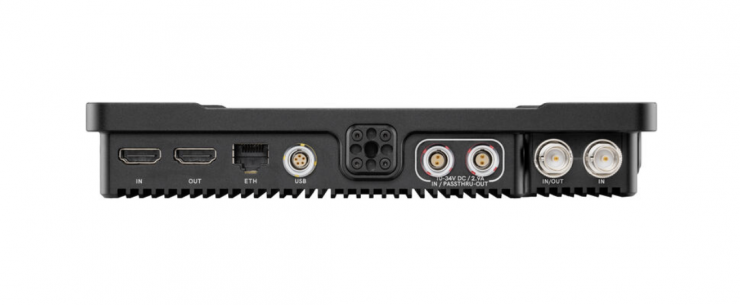
The monitor includes the following inputs and outputs:
- 1 x BNC (6G-SDI) Output
- 1 x HDMI Output
- 1 x BNC (6G-SDI) Input
- 1 x HDMI Input
- 2x LEMO 10-34V 2-pin 2.9A In/passthrough-out
- 1 x LEMO 5-Pin Output
- 1 x RJ45 Output
- 1 x 1/8″ / 3.5 mm Headphone Output
The Ultra 7 offers you a good array of inputs and outputs for a monitor of this size.
In the menu, you can choose the input configuration and you can upload 3D LUTs via the SD card slot.
Physical Buttons
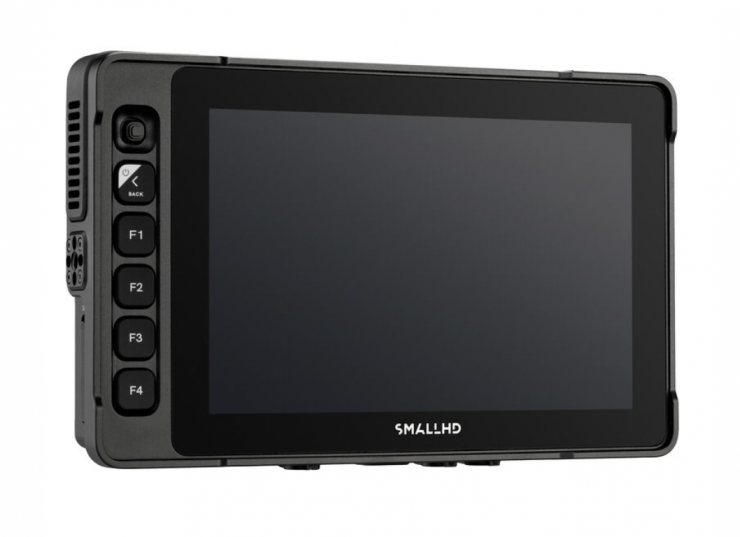
As I previously mentioned, the Ultra 7 is a touchscreen monitor, however, it can also be controlled via a button and a joystick, as well as a series of buttons.
If you are familiar with SmallHD monitors that don’t have touchscreen capabilities you will know that the main operation is done via a small joystick-style button. This is nice and tactile and fairly easy to use. There is also a back button, an input selection button that lets you quickly toggle through which input you want to use.
The joystick-style button on the Ultra 7 is located on the front, along with three Function buttons that you can customize.
While using the physical controls is still reasonably quick to do, most people will prefer to use the touchscreen functionality because of the increased speed that it offers. I like that SmallHD gives you two control solutions with the Ultra 7, because having touchscreen control is not always ideal, especially if you are working in cold climates or when you don’t want to put big fingerprint marks on the screen.
The monitor also has a power on/off button and a lock button. the lock button is handy so you can’t accidentally bring up menus or make changes when it is in the On position.
PageOS 5 operating system
All the functionality of the monitor is available via PageOS, which provides advanced functionality with a simple and efficient graphical user interface.
In my opinion, SmallHD monitors have the easiest OS system to use and operate. There is so much more to a monitor than just image quality, and a good operating system is what often sets monitors apart. Usability and operability sometimes get overlooked by people looking at monitors, but to me, they are right up there with image quality. I own a few different SmallHD monitors and I like being able to go between all of them and using the exact same menu and operating system. This makes going from one to the other seamless.
Lots of monitors have pretty good-looking images, but a lot of them are let down by poorly designed operating systems and monitoring assist tools that are not in any way accurate.
Like all modern SmallHD monitors, the Ultra 7 uses the same PageBuilder OS graphical user interface (GUI). SmallHD built the PageBuilder OS to make menus less confusing. PageBuilder is a very customizable system as it allows you to selectively apply monitoring tools such as waveform, vectorscope, multiview, LUTs, and focusing aids on different “pages”.
At least, in my opinion, the PageOS 5 operating system is far superior to any other operating system on the market, especially the ones that you will find in competing 7″ monitors. The customization and features that are available, put a lot of other operating systems to shame.
SmallHD’s PageOS 5 offers quite few new features and enhanced functionality. Below you can see what some of the key new additions are:
Since the initial release, there have already been two new firmware updates for PageOS 5. SmallHD’s Page OS v5.2.0 firmware update adds a couple of nice new features.
One of the main reasons I personally like SmallHD monitors is that they continually update and add features and improvements to their monitors. With almost all of the cheaper monitors on the market, what you buy is what you get and it is very rare to see firmware updates or new features added.
Mounting
SmallHD provides a lot of mounting points on the monitor which is nice to see. There are mounting points on all four sides of the monitor which gives you a lot of versatility.
Power
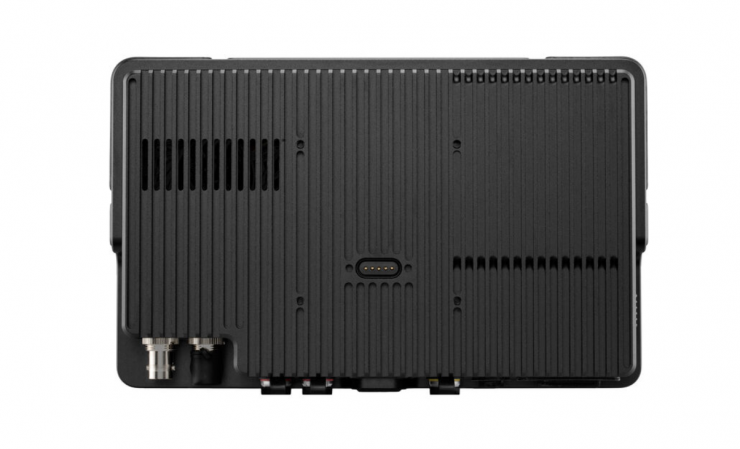
Power is delivered to the Ultra 7 via 2-pin LEMO ports or separately available Gold/V-mount micro battery plates.
TX/RX Versions
SmallHD is also making the Ultra7 Bolt 6 TX 1500 Monitor. This version feature a built-in Bolt 6 wireless transmitter with the ability to send 4K signals using 6 GHz Wireless Transmission up to 1500′.
If you don’t need a 1500′ distance, there is also the Ultra 7 Bolt 6 TX 750 Monitor available that has a range of 750′.
Price & Availability
The SmallHD Ultra 7 is now available to pre-order for $2,999 USD.
$2,999 USD is certainly a lot of money for an on-camera monitor, but at least in my professional opinion, SmallHD does make very reliable, robust and easy to use monitors that are arguable better than anything else on the market at their price.

